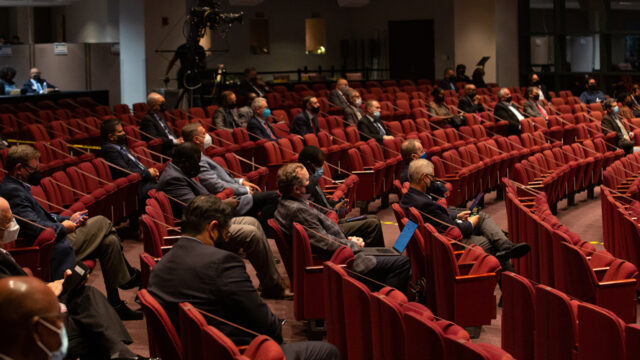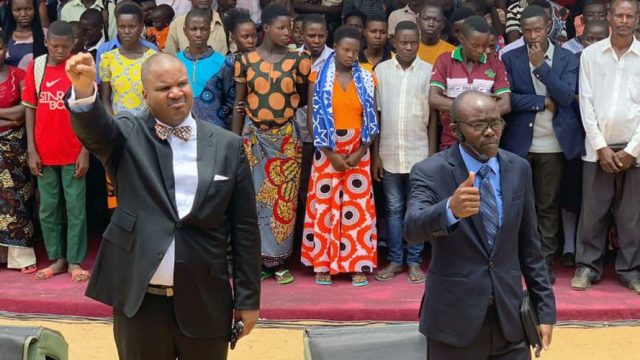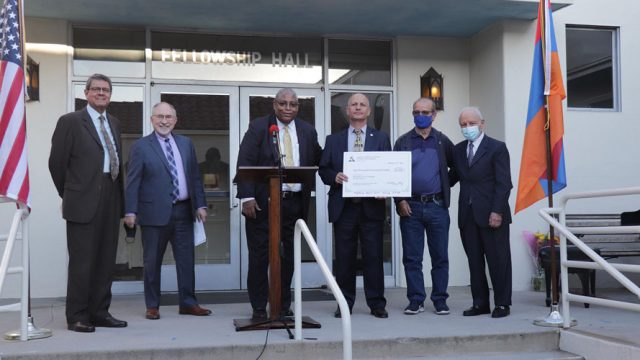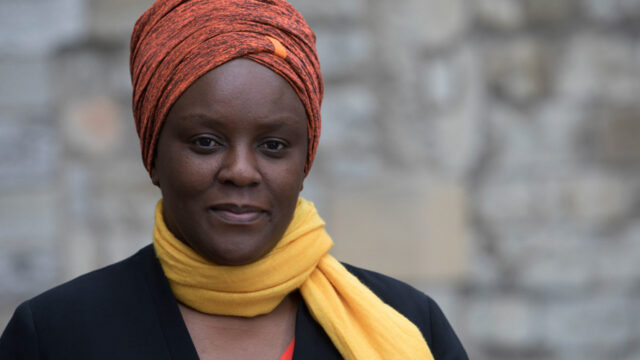North American Division discusses how to grow and nurture the church in the coming years.
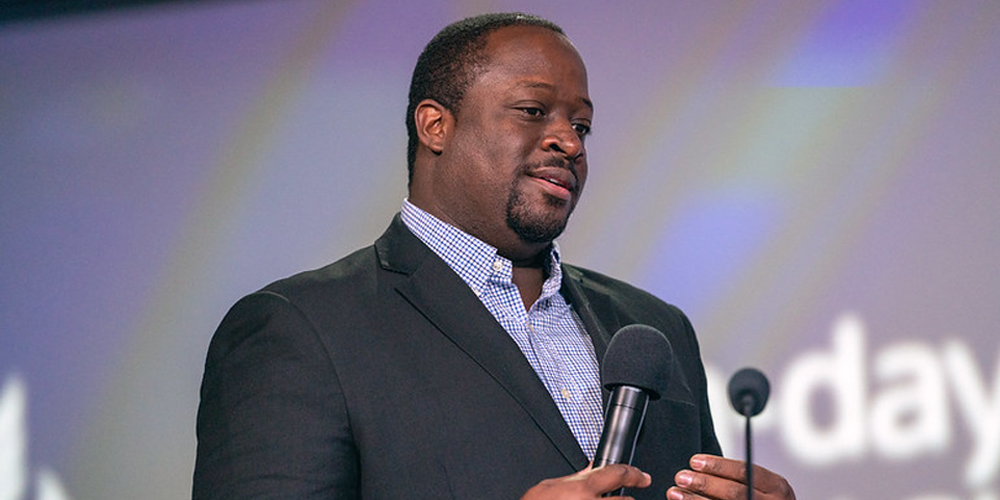
Isaiah Long was appointed pastor of an Apostolic church in Washington, D.C., in 2014. Throughout his life, he’d seen other pastors leading their churches in various ways, but he didn’t want to just mimic others; he wanted to fulfill his calling in the way God created him to.
“God is not satisfied with us being copycats,” Long said. “He wants us to be authentic.”
He began to pray that God would show him how to lead. In October 2016, a question from a congregant started him on a journey that would lead him somewhere very unexpected: the Seventh-day Adventist Church.
As Long dug into Scripture, seeking an answer to the question he’d been asked, he began to find more and more puzzle pieces that didn’t fit into the spiritual picture as he understood it. His research brought him to Amazing Facts, which helped him answer the question he’d been asked originally and led him to ask other questions, including questions about the Sabbath.
“As the pieces began to fall into place, God revealed the Sabbath to my wife and me,” Long said. “We were worshiping on Sunday but felt convicted by God of the Sabbath.”
They began keeping the Sabbath while also worshiping on Sunday. After nine months of this, the Lord challenged them to transition their congregation, and in the summer of 2017, Long stood in front of them and shared what the Lord was doing in his heart.

Through this admission, Long learned that the church organist was an Adventist, and he connected Long to an Adventist pastor, who provided resources and support as Long and his wife worked with their congregation on the shift.
Over the next 18 months, Long and his wife met with each family in the church individually to discuss their new understanding of the Sabbath. In the end, they lost around 60 percent of their congregation, but since September 2018, they have been worshiping as a church on Saturday.
“We had some tough conversations — including in our home — but as long as we stuck to the Word of God, everything made sense.”
Long’s story is unusual, but it shows the effectiveness of an Adventist online resource that led him to the Bible truth. Endless opportunities exist for similar experiences to become a reality.
Long’s story, shared during the North American Division (NAD) Year-End Meeting on Sunday, October 31, 2021, perfectly demonstrates the strategic focus of the division: multiply, media, mentorship. Over the course of three days of meetings, G. Alexander Bryant, NAD president, asked union leaders to consider specific questions related to these three words during breakout sessions. The results of these discussions were compiled into a master list and voted on each day, and the final selected list of ideas will guide NAD leadership as they move the division forward into the future of the church.
Multiply
How can we increase members’ involvement in the mission of the church? How can we increase our impact and influence on the community? What are some opportunities to collaborate with other entities? Should our methodology change in a post-COVID world? If so, how?
These were some of the questions presented on day four of the meetings to the NAD union and conference executive committee representatives as they gathered in nine different breakout sessions based on the nine unions in the NAD territory.
Evangelism and church planting are standard go-to responses to questions about how to grow the church, but many church leaders are beginning to thoughtfully consider what those activities look like.
“We have 300 teachers in our union, and we want each of them to recognize that they are evangelists,” Jose Joseph, of the Atlantic Union Conference (AUC), said, sharing that one idea they had was to set a goal of having at least one baptism in every school in 2022.

Meeting people where they are is an important part of connecting the church to its community, even beyond the classroom.
“We need to focus on things that are actually needed in the communities and neighborhoods we propose to serve,” Mark Johnson, president of the Seventh-day Adventist Church in Canada (SDACC), said following the breakout session.
By way of example, the SDACC shared that several of its churches have turned their large open lawn areas into growing spaces for community gardens. “We want the Adventist church to be known as the place to go to be fed,” they said. “Not only physically fed, but spiritually and socially as well.”
Reporting on behalf of the Lake Union Conference (LUC), Ken Denslow shared a similar sentiment. “We need to reach out to community leaders and get involved in community programs as a church,” Denslow, LUC president, said. “We shouldn’t be focused on ‘winning’ them, but we should be engaged as part of the community, helping to make it a better place. People will be interested in a church that serves.”
Media
The union breakout sessions on the fifth day of the year-end meetings were intended to focus on the following questions:
What attributes do you believe are currently associated with the Adventist brand in North America? How is my entity maximizing the power of media? How can we best brand the Adventist church? How can our church entities best collaborate to tell a bigger, better story? How can we encourage our members to use their social media accounts as evangelistic outreach?
During their reports, each of the unions recognized and acknowledged the importance and necessity of digital ministry — if they weren’t already aware and onboard before the pandemic, they certainly are now. Many also recognized the role young people can play in utilizing this valuable tool for the church and for Christ, primarily because they are already doing it. Those who aren’t engaged in using digital media as a resource have the skills to do so; they simply need to be invited and trained to use those skills for ministry.
One suggestion from the Pacific Union (PUC) was to shift digital focus from websites to apps and use church members who are already successful online. “We have pastors and young adults who have thousands of followers,” Sandra Roberts, PUC secretary, said. “Let’s identify our social media influencers and work with them.”

Many groups recommended that the church offer training opportunities so that social media could be effectively used to its full potential. This includes helping church members know what and when to post about the church and training pastors and youth to effectively and positively interact with people online. It also includes providing ready-made content or training in how to create effective content.
Several commentators said all of this boils down to one word: branding. When listing words, phrases, and concepts typically associated with the Adventist Church, most groups identified those related to education and health care, particularly BlueZones. Though not everyone knows the Adventist connection to the BlueZones project, John Bradshaw of It Is Written media ministry pointed out, “Many are familiar with the project, we just need to market the church as a ‘Blue Zone’ of our own.”
At the conclusion of the discussion, participants were asked to vote on methods for three goals: (1) increasing member involvement in the church’s mission, (2) increasing disciples in the church, and (3) multiplying the impact and influence of the church in the community. Out of 10 options listed for consideration, an overwhelming majority (78 percent) chose “Focus on the needs of the community.” A close second were options related to mentorship.
Mentorship
According to numbers reported by Bryant during the NAD Year-End Meeting, 78 percent of presidents, 58 percent of secretaries, and 50 percent of treasurers within the church become eligible for retirement in the next five years. Nearly 50 percent of current pastors are eligible for retirement in three years.
The need to develop a new generation of church leaders is growing exponentially each year, Bryant said. And, he pointed out, working together on mentoring young leaders will yield a better result than trying to accomplish it as a field of silos.
“We must collaborate in creating intentional leadership development plans,” he said.
Union groups were asked to consider several questions in the final breakout sessions, including: How are we equipping the next generation of leaders? How do we bring our young people into leadership and prepare them for successful church leadership in the future? How do current leaders find someone to intentionally mentor? How do we change the perception of “ambition” as being negative?
In an interesting twist, the Southwestern Union suggested that perhaps young people themselves have some answers. “We should start by asking them what should be done to attract and prepare young leaders,” Stephen Brooks, SWUC secretary, said. “We should find out from them what mentorship should look like and how we as a church can earn their trust.”
Some of the many different ideas suggested by various unions to intentionally and effectively engage the younger generations as leaders within the church included cross-training; normalizing leadership development; internships; recruiting; structured coaching programs; and inviting youth to be part of committees, boards, and other decision-making and advisory groups.
“No matter what we come up with,” Ron Smith, president of the Southern Union, said in summing up the need in the breakout topics: “We need to pray, or it won’t succeed.”
The original version of this story was posted on the North American Division news site.


